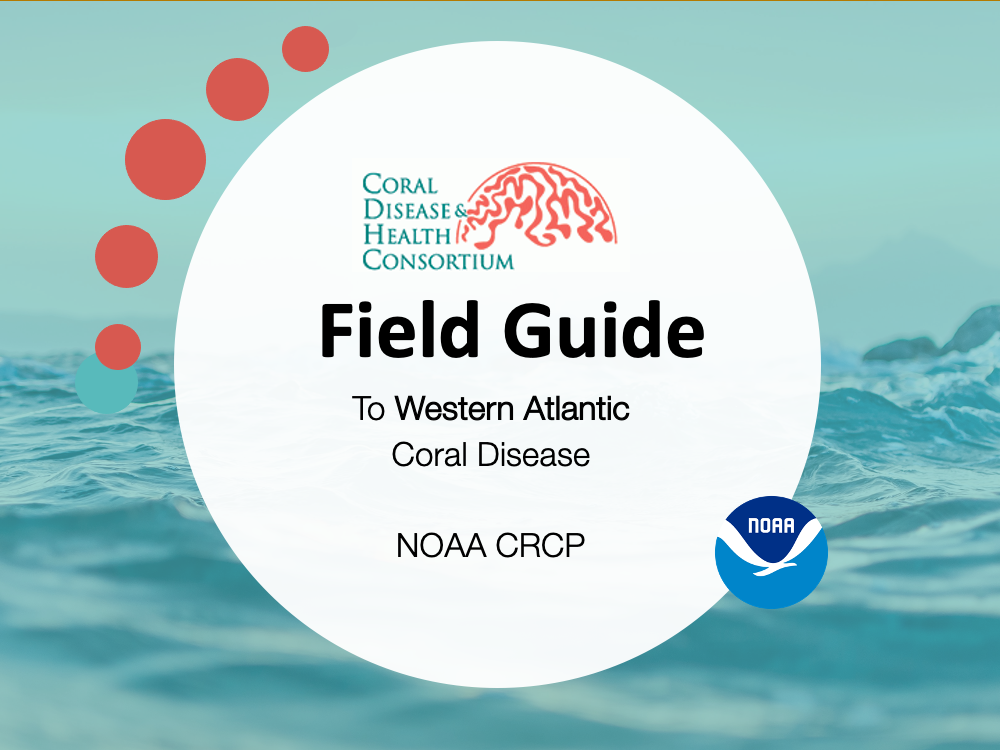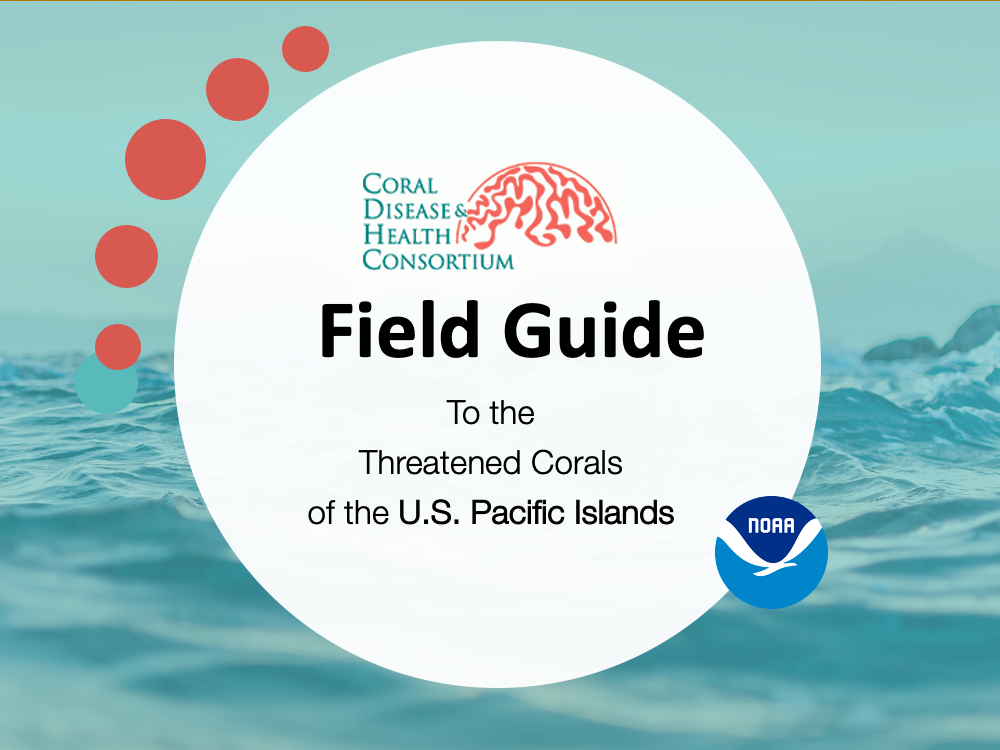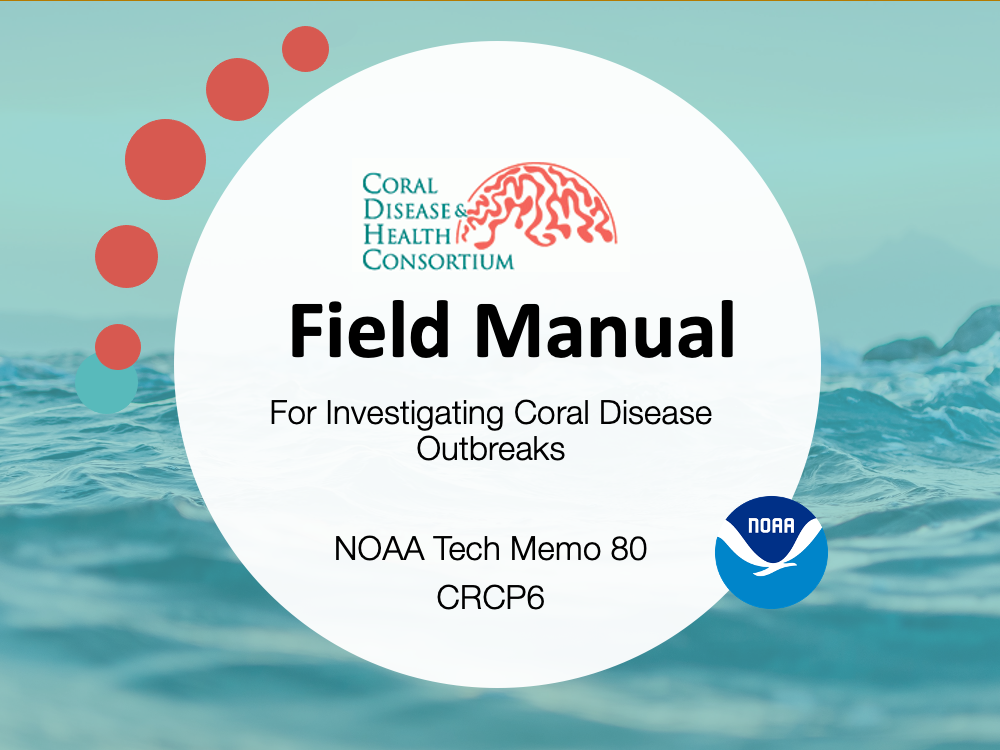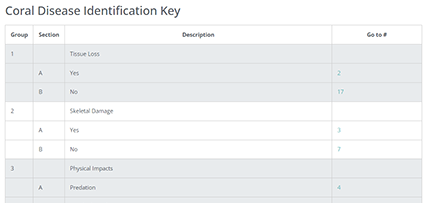The Three Levels of Disease Diagnosis:
Level I
Describe the Gross Signs of Disease
Through a detailed field assessment, and with the help of tools such as the Coral Disease Diagnostic Decision Tree and Coral Disease Identification Keys, it is possible to identify a common field name that describes the disease in a particular coral and apply the same terminology to other corals (regardless of species) with similar gross visible signs. This approach is used primarily for rapid assessment and routine monitoring and most often precedes a more detailed investigation.

Level II
Characterize the Diseased Tissues
The Level II analysis involves a detailed examination of affected and unaffected tissue taken from the diseased coral (and compared to representative presumed healthy corals) using histology. This approach can help identify the presence of microorganisms and describe morphological changes to the tissue. This may result in a morphologic diagnosis.
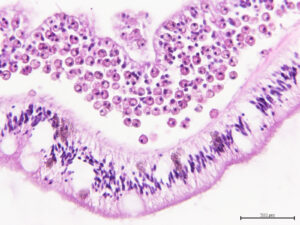
Level III
Investigate the Cause
The Level III analysis involves applying a detailed set of field and laboratory tests to identify and confirm the presence of proposed causative agent(s), toxin or other factor responsible for the disease. Microbial diseases may be determined according to Koch’s postulate – where a presumed pathogen is isolated, grown in pure culture, identified, and used to infect a healthy host. If disease signs appear following infection and the presence of the pathogen is confirmed, an etiologic diagnosis may be assigned.

Field Guides:
Other Tools and Resources for Diagnosing Coral Disease in the Field:
Diagnostic Decision Tree
Answer questions about field observations to diagnose a coral disease
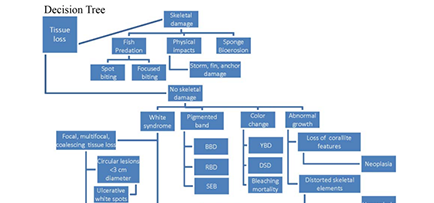
Coral Disease Assessment Form
Download and use this form for documenting coral disease in the field
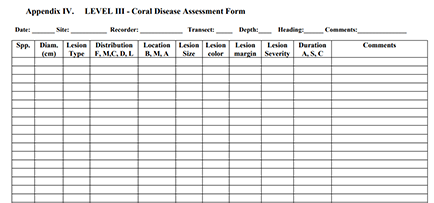
 Official websites use .gov
A .gov website belongs to an official government organization in the United States.
Official websites use .gov
A .gov website belongs to an official government organization in the United States. Secure .gov websites use HTTPS
A lock or https:// means you’ve safely connected to the .gov website. Share sensitive information only on official, secure websites.
Secure .gov websites use HTTPS
A lock or https:// means you’ve safely connected to the .gov website. Share sensitive information only on official, secure websites.
